Austin Kleon is the New York Times bestselling author of a trilogy of illustrated books about creativity in the digital age: Steal Like An Artist, Show Your Work!, and Keep Going. The triology by Kleon addresses a different theme in each of the books.
- Steal Like An Artist: A list of 10 advice for young artists starting (manifesto for creativity in the digital age)
- Show Your Work: A list of 10 ways to share your creativity and get discovered in the process (Self-Promotion).
- Keep Going: 10 ways to stay creative and focused during the good and bad times (Creative Resilience)
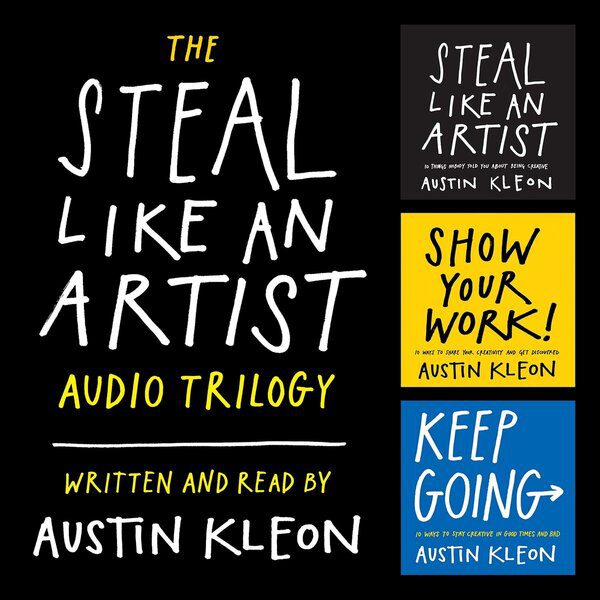
I found Kleon triology on creativity to be thought provoking, inspiring and illuminating. Here are some great insights from the three books:
Steal like an Artist
“Good artists borrow, great artists steal.” – Pablo Picasso
In 2011, Kleon was asked to address college students in upstate New York, he shaped his speech around the ten things he wished someone had told him when he was starting out.
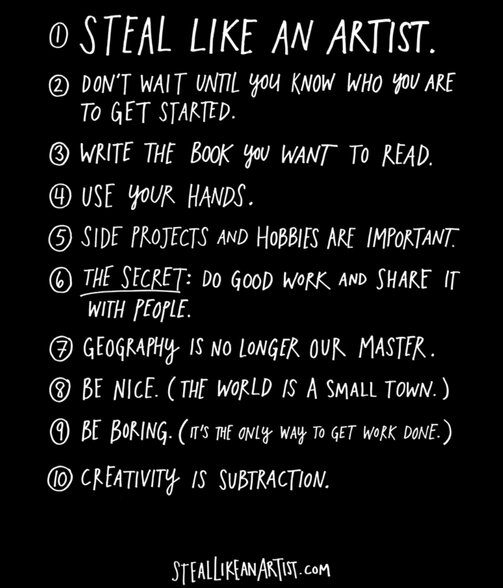
What a good artist understands is that nothing comes from nowhere. All creative work builds on what came before. Nothing is completely original.
If we’re free from the burden of trying to be completely original, we can stop trying to make something out of nothing, and we can embrace influence instead of running away from it.
“Every new idea is just a mashup or a remix of one or more previous ideas.”
Hoarders collect indiscriminately, artists collect selectively. They only collect things that they really love.
Your job is to collect good ideas. The more good ideas you collect, the more you can choose from to be influenced by.
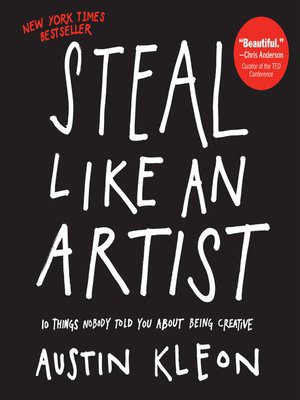
School Yourself
School is one thing. Education is another. The two don’t always overlap. Whether you’re in school or not, it’s always your job to get yourself an education.
You have to be curious about the world in which you live. Look things up. Chase down every reference. Go deeper than anybody else—that’s how you’ll get ahead.
Google everything. I mean everything. Google your dreams, Google your problems. Don’t ask a question before you Google it. You’ll either find the answer or you’ll come up with a better question.
Always be reading. Go to the library. There’s magic in being surrounded by books. Get lost in the stacks. Read bibliographies. It’s not the book you start with, it’s the book that book leads you to.
“It is better to take what does not belong to you than to let it lie around neglected.” —Mark Twain
“All the world’s a stage. Creative work is a kind of theater. The stage is your studio, your desk, or your workstation. The costume is your outfit—your painting pants, your business suit, or that funny hat that helps you think. The props are your materials, your tools, and your medium. The script is just plain old time. An hour here, or an hour there—just time measured out for things to happen.
“Be so good they can’t ignore you.” – Comedian Steve Martin
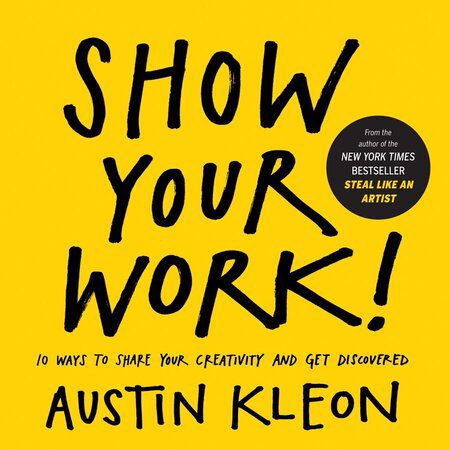
Show your Work
Show Your Work is a list of 10 ways to share your creativity and get discovered in the process. The big idea of the book is that creativity is about the process and not the product. By sharing your process openly, you can build an audience that you can use to gather feedback, make a personal and professional connection or patronage.
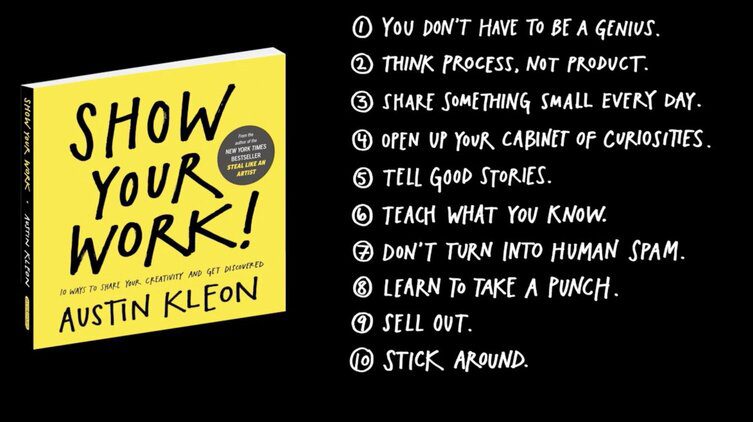
You don’t really find an audience for your work; they find you. But it’s not enough to be good. In order to be found, you have to be findable.
The best way to get started on the path to sharing your work is to think about what you want to learn, and make a commitment to learning it in front of others. Find a scenius, pay attention to what others are sharing, and then start taking note of what they’re not sharing. Be on the lookout for voids that you can fill with your own efforts, no matter how bad they are at first. Don’t worry, for now, about how you’ll make money or a career off it. Forget about being an expert or a professional, and wear your amateurism (your heart, your love) on your sleeve. Share what you love, and the people who love the same things will find you.
Whatever excites you, go do it. Whatever drains you, stop doing it.—Derek Sivers
By putting things out there, consistently, you can form a relationship with your customers. It allows them to see the person behind the products. Audiences not only want to stumble across great work, but they, too, long to be creative and part of the creative process. By letting go of our egos and sharing our process, we allow for the possibility of people having an ongoing connection with us and our work, which helps us move more of our product.
Whether you’re telling a finished or unfinished story, always keep your audience in mind. Speak to them directly in plain language. Value their time. Be brief. Learn to speak. Learn to write. Use spell-check. You’re never “keeping it real” with your lack of proofreading and punctuation, you’re keeping it unintelligible.
Everybody loves a good story, but good storytelling doesn’t come easy to everybody. It’s a skill that takes a lifetime to master. So study the great stories and then go find some of your own. Your stories will get better the more you tell them.
What you want is to follow and be followed by human beings who care about issues you care about. This thing we make together. This thing is about hearts and minds, not eyeballs. —Jeffrey Zeldman
Look for something new to learn, and when you find it, dedicate yourself to learning it out in the open. Document your progress and share as you go so that others can learn along with you. Show your work, and when the right people show up, pay close attention to them, because they’ll have a lot to show you.
Keep Going
In Keep Going: 10 Ways to Stay Creative in Good Times and Bad, author Austin Kleon shares 10 ways to stay creative and focused during the good and bad times.
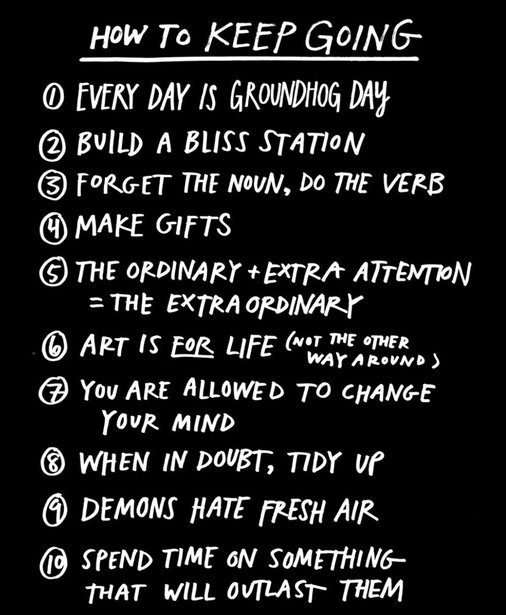
The creative life is not linear. It’s not a straight line from point A to point B. It’s more like a loop, or a spiral, in which you keep coming back to a new starting point after every project. No matter how successful you get, no matter what level of achievement you reach, you will never really “arrive.” Other than death, there is no finish line or retirement for the creative person.
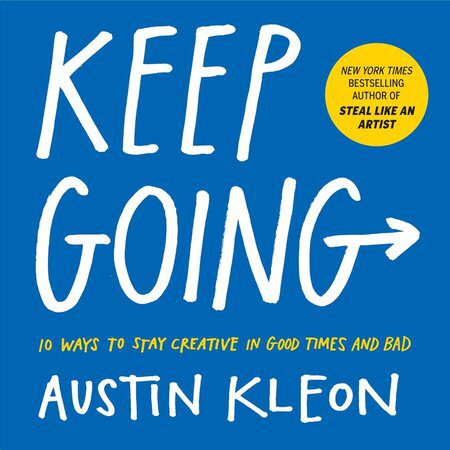
Creativity is about connection—you must be connected to others in order to be inspired and share your own work—but it is also about disconnection. You must retreat from the world long enough to think, practice your art, and bring forth something worth sharing with others. You must play a little hide-and-seek in order to produce something worth being found.
For anyone trying to discern what to do with their life: PAY ATTENTION TO WHAT YOU PAY ATTENTION TO. That’s pretty much all the info you need. —Amy Krouse Rosenthal
Go easy on yourself and take your time. Worry less about getting things done. Worry more about things worth doing. Worry less about being a great artist. Worry more about being a good human being who makes art. Worry less about making a mark. Worry more about leaving things better than you found them.
All the Best in your quest to get Better. Don’t Settle: Live with Passion.
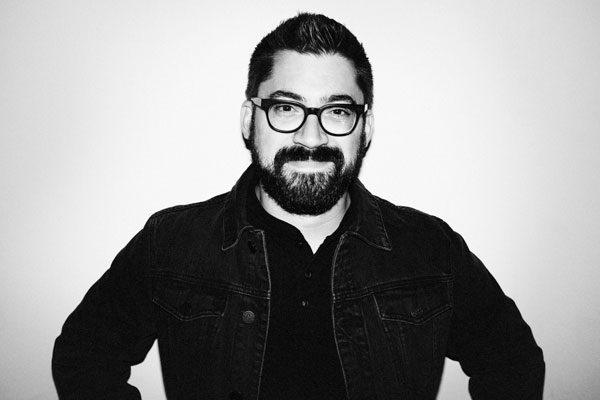
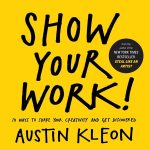
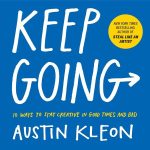
Comments are closed.